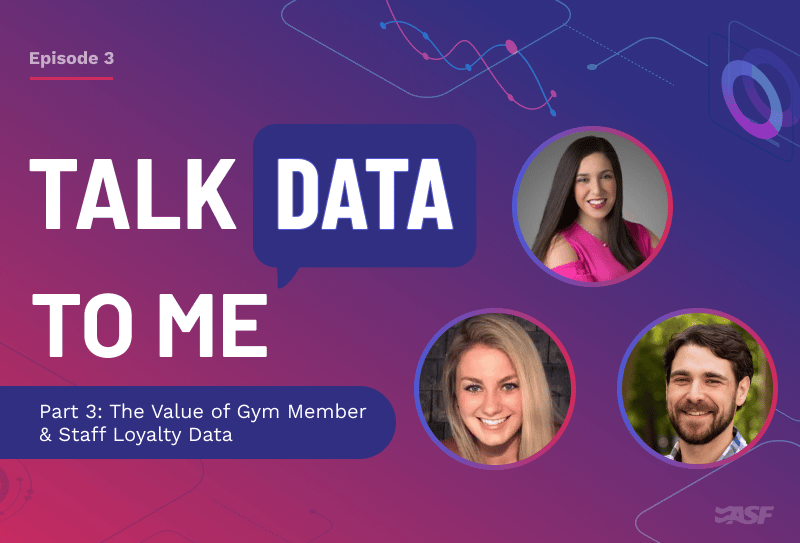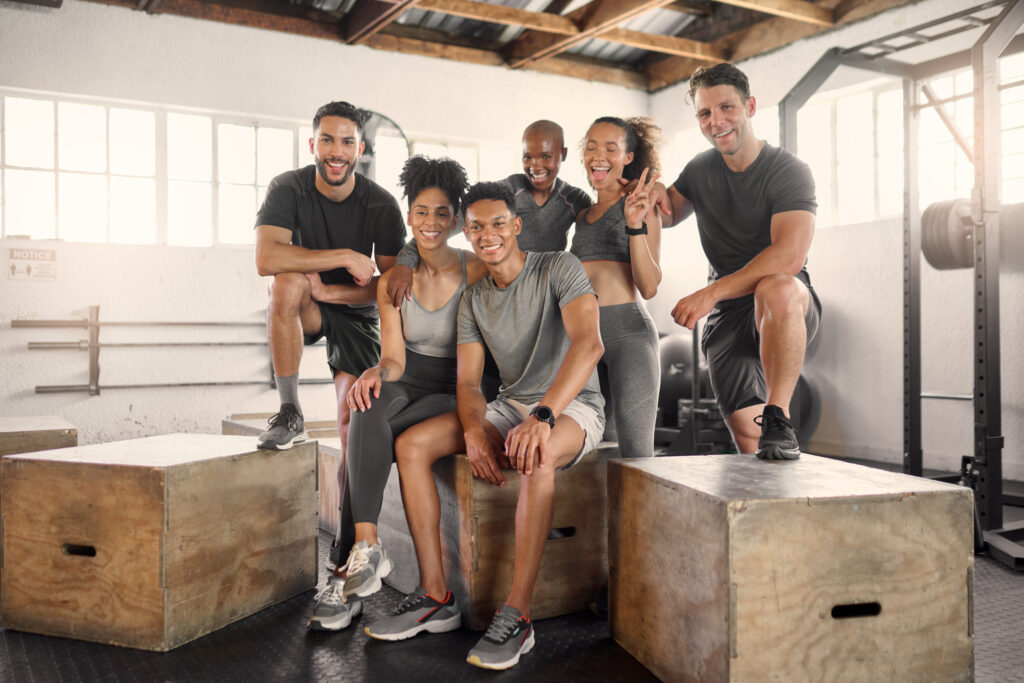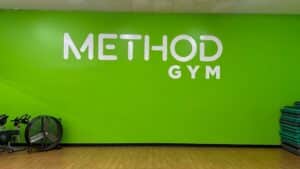Getting a new member to join your gym takes a lot of effort—and money. If that new member leaves after just a few months, then was it really worth expending those resources in the first place? Probably not.
Then how do you know whether your fitness business is truly growing? Or what’s driving that growth? And, if it’s not growing, where are your obstacles?
The answers to all those important questions lie in your customer loyalty data.
Customer loyalty data is information gathered directly from your members, prospects, and ex-members about what they think about your club. There’s a lot you can do with this data to make your business stronger and refine your gym member experience.
In the latest episode of the ASF and Club OS webinar series, Talk Data To Me, hosts Sarah Pellegrino and Nick Hahn talk all about customer loyalty data with Katie Bossie, a Senior Account Executive at Listen360, one of our partner brands. If you missed it, you can watch it below or keep reading to get the highlights!
The Benefits of Collecting Member Loyalty Data
Feedback from your club members is some of the most insightful data you can get your hands on. After all, who better to help you understand what your members like, dislike, and think about your gym than your members themselves?
To begin their discussion, Katie, Sarah, and Nick went over some of the things you can do with the power of customer loyalty data. Here are a few of the benefits they singled out:
Identify opportunities for improvement.
When you know what your members aren’t liking about their experience, you can be proactive about fixing those weak spots. That knowledge and your subsequent action can save you countless retained and future members (and dollars).
Retain at-risk members.
Those same insights about what customers don’t like and why they cancel allow you to address member concerns and recognize when someone might be preparing to leave. This gives you the chance to engage and delight them before they jump ship.
Take advantage of key strengths.
On the flip side, positive feedback from members will help you discover what you’re doing well and what makes your brand unique. You can use those strengths to your advantage in your positioning and messaging for marketing, prospect nurturing, and member retention.
Collect positive reviews.
95% of customers read reviews before making a purchase. That makes reviews and testimonials from happy members one of your strongest tools for attracting and converting new members. You can also encourage those happy members to refer you to their friends.

The Benefits of Collecting Gym Staff Loyalty Data
As they continue to explore the benefits of having customer loyalty data, Sarah and Katie point out that it’s not just your member’s opinions you should be worried about.
How your employees feel about their experience at your club is just as important. And here’s why:
Retain more employees.
By asking for employee feedback, you can learn what aspects of your employee experience need improvement, what staff members are satisfied with, and what they want to see going forward. Whether it’s compensation and benefits or company culture, knowing what makes your staff loyal will inform what you need to focus on to reduce turnover.
Improve member loyalty.
Years of looking at loyalty data have taught Katie that employee loyalty directly predicts member loyalty. Why? Because happy, loyal staff members channel their satisfaction into the experiences they provide for members.
Refine your application process.
The collection of employee feedback doesn’t have to mean just your current employees—it can extend to your applicants too. Long and complex applications and interviews can put off potential applicants. With insight into the positives and negatives of these processes, you can adjust them to better attract and bring in the best industry talent.
How to Collect Gym Member & Staff Loyalty Data
So, now you know about the many different doors you can open when you collect member and employee loyalty data. And you know that those doors can lead to business growth and more profits.
Now, how do you get started?
The most efficient and effective way to collect loyalty data is using a net promoter-based feedback platform.
A feedback platform is a type of software that can integrate with your gym management system. It’ll automatically send out surveys you create to members, prospects, ex-members, employees, and others.
A net promoter-based platform is one that focuses on obtaining a net promoter score for your business. Listen360 is a net promoter-based feedback platform.
A net promoter score or NPS, as defined by HubSpot, is a customer satisfaction benchmark that measures how likely your customers are to recommend you to someone else. Individuals surveyed are given an NPS score on a scale of 1-10. Those individual scores from your customers are used to calculate your total NPS score on a scale of 1-100.
Essentially, Katie says, your NPS is a reflection of loyalty and a predictor of business growth.
When you’re using a tool like Listen360, NPS surveys are sent out automatically at key trigger points in the member journey.
You can create these surveys and set these trigger points. Common triggers include when a member checks in (not every time, but routinely), after they attend their first group fitness class, after a prospect takes a tour, and when a member cancels.
You can use Listen360 to create and send surveys to your employees too.
As surveys are filled out, you can review the loyalty data collected through a series of dashboards and reports that are updated in real-time. You’ll also receive a nightly email with these insights.
Katie suggests that gyms categorize their loyalty data using the Kano model.
The Kano model is a method for understanding your club members’ preferences—as identified by your NPS data—and prioritizing them. It divides customer preferences into three categories:
- Barriers—Things your business must get right, or you can expect to see a decrease in member loyalty. Customers expect these, so they have no net positive impact on loyalty. An example would be the cleanliness of your gym.
- Key Drivers—Initiatives that, if done well, will have a net positive impact on loyalty. But if they’re not done well, they’ll have a negative impact on loyalty. An example would be the quality of a group fitness class.
- Delighters—Wow factors that are not expected but can generate a boost in loyalty. If you don’t have them, though, they won’t negatively impact loyalty because they’re not expected in the first place. An example would be a class pack giveaway.
Your customer loyalty data will shed light on whether you’re struggling with any barriers or key drivers. It’ll also highlight key drivers and delighters that are having a positive impact on loyalty.
From there, you’ll be able to determine where to focus your efforts to drive up your NPS—and with it, your club’s growth and revenue.
Catch Up on All Things Data
Looking for more ways your gym can use data to attract, convert, and retain more members and drive revenue? Check out our recaps of episode one and episode two of Talk Data to Me!
You can watch the episode recordings or read through our overviews to learn about the best ways to communicate with members, the power of ASF dashboards, and more. And don’t forget to stay tuned for our fourth and final episode later this year!






